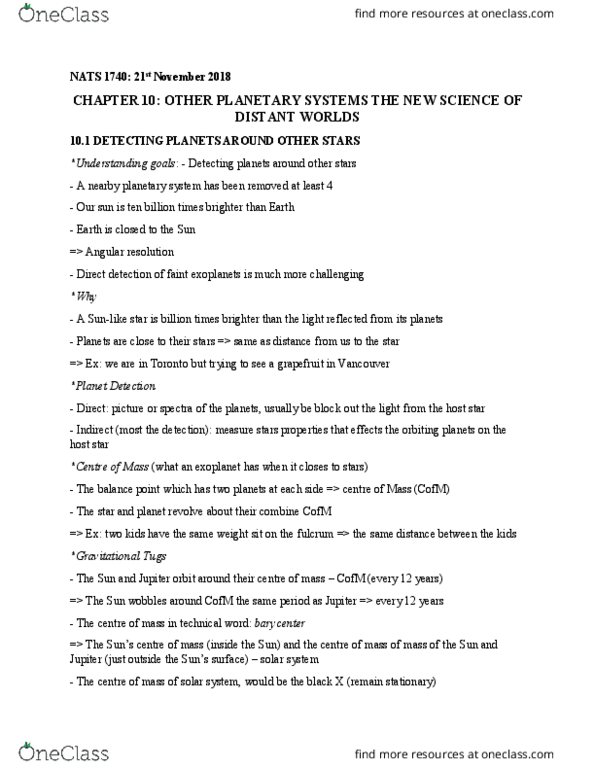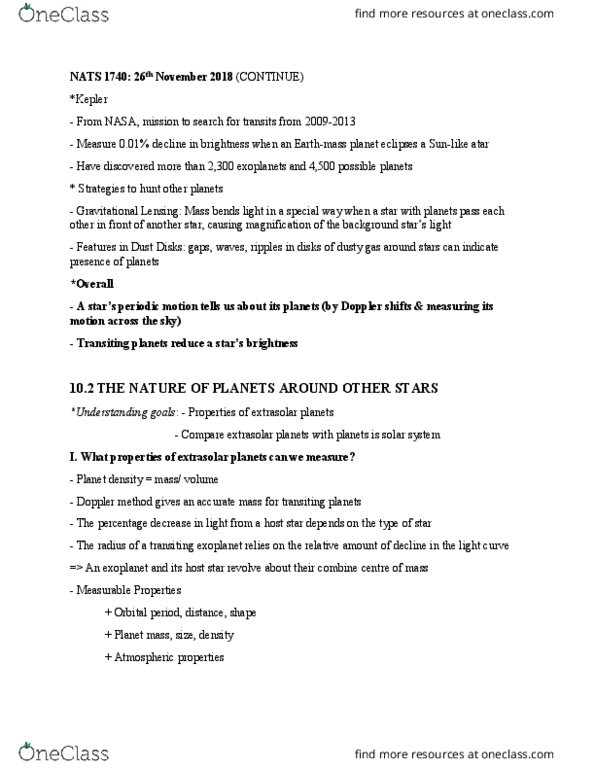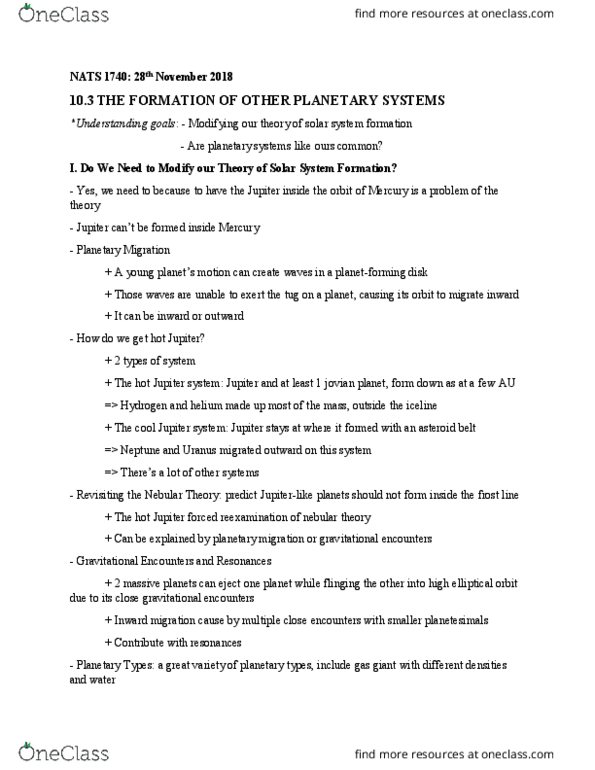NATS 1740 Lecture Notes - Lecture 36: Light Curve, Orbital Period
NATS 1740 verified notes
36/37View all
Document Summary
From nasa, mission to search for transits from 2009-2013. Measure 0. 01% decline in brightness when an earth-mass planet eclipses a sun-like atar. Have discovered more than 2,300 exoplanets and 4,500 possible planets. Gravitational lensing: mass bends light in a special way when a star with planets pass each other in front of another star, causing magnification of the background star"s light. Features in dust disks: gaps, waves, ripples in disks of dusty gas around stars can indicate presence of planets. A star"s periodic motion tells us about its planets (by doppler shifts & measuring its motion across the sky) 10. 2 the nature of planets around other stars. Doppler method gives an accurate mass for transiting planets. The percentage decrease in light from a host star depends on the type of star. The radius of a transiting exoplanet relies on the relative amount of decline in the light curve.




